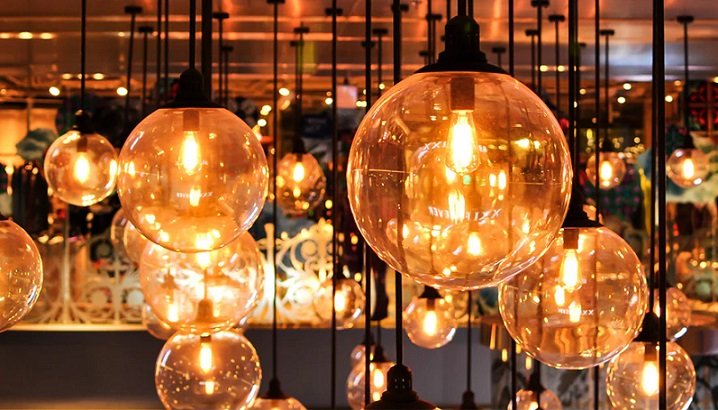In the realm of interior and exterior design decorative lights stand as more than mere sources of illumination. They possess the transformative power to redefine spaces, imbue environments with ambiance, and accentuate architectural features. From humble origins as practical light sources to becoming pivotal elements of aesthetic expression, decorative lights have evolved significantly, catering to both functional needs and artistic sensibilities.
Evolution of Decorative Lights: From Utility to Artistry
Table of Contents
Historically, light sources were primarily utilitarian, designed to provide illumination after sunset. The advent of electricity in the late 19th century revolutionized the possibilities, allowing for the development of more diverse and intricate lighting fixtures. Initially, designs were simple and focused on functionality, but over time as materials and manufacturing techniques advanced decorative lights began to emerge in various forms.
The early 20th century witnessed a surge in decorative lighting styles influenced by Art Nouveau and Art Deco movements, characterized by organic forms, intricate detailing, and the use of new materials such as glass and metals. These movements laid the foundation for the integration of decorative lighting into interior design as a means of not just lighting rooms, but also enhancing their visual appeal.
The Role of Decorative Lights in Modern Design
Fast forward to the present day, and decorative lights have become indispensable elements of interior and exterior design schemes. They are employed not only for their practical purpose of lighting up spaces but also for their ability to create mood, highlight architectural features, and define spatial aesthetics. Modern advancements in technology, such as LED lighting and smart home integration, have further expanded the possibilities for decorative lighting, allowing for energy efficiency, customization of ambiance, and even interactive elements controlled via smartphones or voice commands.
Types and Applications of Decorative Lights
1. Indoor Decorative Lighting:
- Chandeliers and Pendant Lights: Grand chandeliers and sleek pendant lights serve as focal points in dining rooms, foyers, and living spaces, adding elegance and drama.
- Table and Floor Lamps: These versatile lights provide task lighting and ambient glow, enhancing reading nooks, bedside tables, and corners.
- Wall Sconces: Ideal for accentuating artwork or architectural features, wall sconces offer both functional and decorative benefits.
2. Outdoor Decorative Lighting:
- String Lights and Festoon Lighting: Popular for outdoor gatherings and garden parties, these lights create a festive atmosphere.
- Landscape Lighting: Spotlights, pathway lights, and well lights not only illuminate outdoor spaces but also highlight landscaping elements and improve safety.
- Architectural Lighting: Used to accentuate the exterior of buildings, architectural lighting adds drama and visual interest after dark.
Trends in Decorative Lighting
1. Sustainable Design:
- LED Technology: Energy-efficient and versatile, LED lights dominate the decorative lighting market, offering long-lasting illumination with minimal energy consumption.
- Upcycled and Eco-friendly Materials: Designers are increasingly using recycled materials and sustainable sourcing practices to create eco-conscious lighting solutions.
2. Smart Lighting:
- Integration with Smart Home Systems: Decorative lights can now be controlled remotely via apps or voice assistants, allowing for customization of color, brightness, and scheduling.
- Interactive Lighting: Some designs incorporate sensors or responsive elements that adjust based on environmental factors or user interaction.
The Art of Choosing Decorative Lights
Selecting the right decorative lights involves considering several factors beyond aesthetics:
- Functionality: Determine the primary purpose of the light (ambient, task, accent) and its location before selecting a fixture.
- Scale and Proportion: Ensure that the size of the light fixture is appropriate for the space it will illuminate, considering ceiling height and room dimensions.
- Style and Aesthetics: Match the fixture’s design to the overall decor style of the room or outdoor space to create a cohesive look.
- Budget and Maintenance: Factor in upfront costs, ongoing maintenance (especially for outdoor lights), and energy efficiency ratings.
Conclusion
In conclusion, decorative lights have transcended their utilitarian origins to become integral components of interior and exterior design. Their ability to blend functionality with aesthetic appeal makes them indispensable in creating inviting, well-lit, and visually appealing spaces. As technology continues to evolve, so too will the possibilities for innovative and sustainable decorative lighting solutions, ensuring that they remain at the forefront of design trends for years to come.
Whether adorning a grand dining hall with a sparkling chandelier or illuminating a cozy backyard with soft string lights, decorative lights not only illuminate spaces but also enrich the human experience through their artistry and allure.
